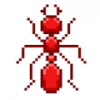i recently obtained 5 pheidole dentata colonies from the outer banks, NC. should i use a heating cable and should i hibernate them and at what temperature? secondly, two of the colonies have been experiencing 1-3 random worker deaths. the ants are fed sunburst ant nectar and fresh termites, so i sincerly doubt its a dietary issue. what causes this and how can it be prevented? should i be concerned?
- Formiculture.com
- Forums
- Gallery
- Members
- Member Map
- Chat
















